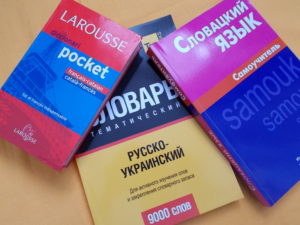Today’s blog post continuous our series on efficient learning and revision strategies in language learning and will show you some simple methods with which you can avoid mixing up closely related languages.
A simple but very efficient method of learning or revising closely related languages is to use textbooks and learning materials written in one of the languages to learn or revise the other one. To give an example, if you tend to mix up, let’s say, Spanish and Portuguese, or Spanish and Italian, then use some materials that are written in your ‘stronger’ language of the two to revise or learn the other. The great advantage of this method is that you see the two languages directly side by side in comparison. If you compare the vocabulary when revising, you will see exactly where the two languages converge and use a very similar or even identical word or expression, and where they depart and use a quite different word or phrase. A nice side effect of this technique is also that you can practice and revise two languages at the same time. And in the case that you really do not understand a word or phrase in either of the languages, you can always look up that word or phrase in a dictionary in your native tongue. A further advantage of using materials written for speakers of one of the two languages for learning the other is that these books and resources will usually point out the pitfalls precisely for speakers of one of the languages in learning the other and often contain tips on which aspects in particular to pay attention to avoid any such mistakes and ‘false friends’.
If you prefer online-resources to books, then you can use the same technique on duolingo, both for revision and to learn a new language. One of the nice things about this platform is that many languages are available in a wide range of language combinations, especially the more popular languages, so that you can choose one that suits you best, e.g. learning Italian via Spanish, or a Spanish-Portuguese combination, etc. The system will then show you exactly where the sentences in both languages converge and depart in their vocabulary and grammatical structures. Those readers who know the platform will know how strict the system is about a very precise translation of the words and sentences. If you practice regularly in this way, you will be far less likely to mix up the similar languages over time.

